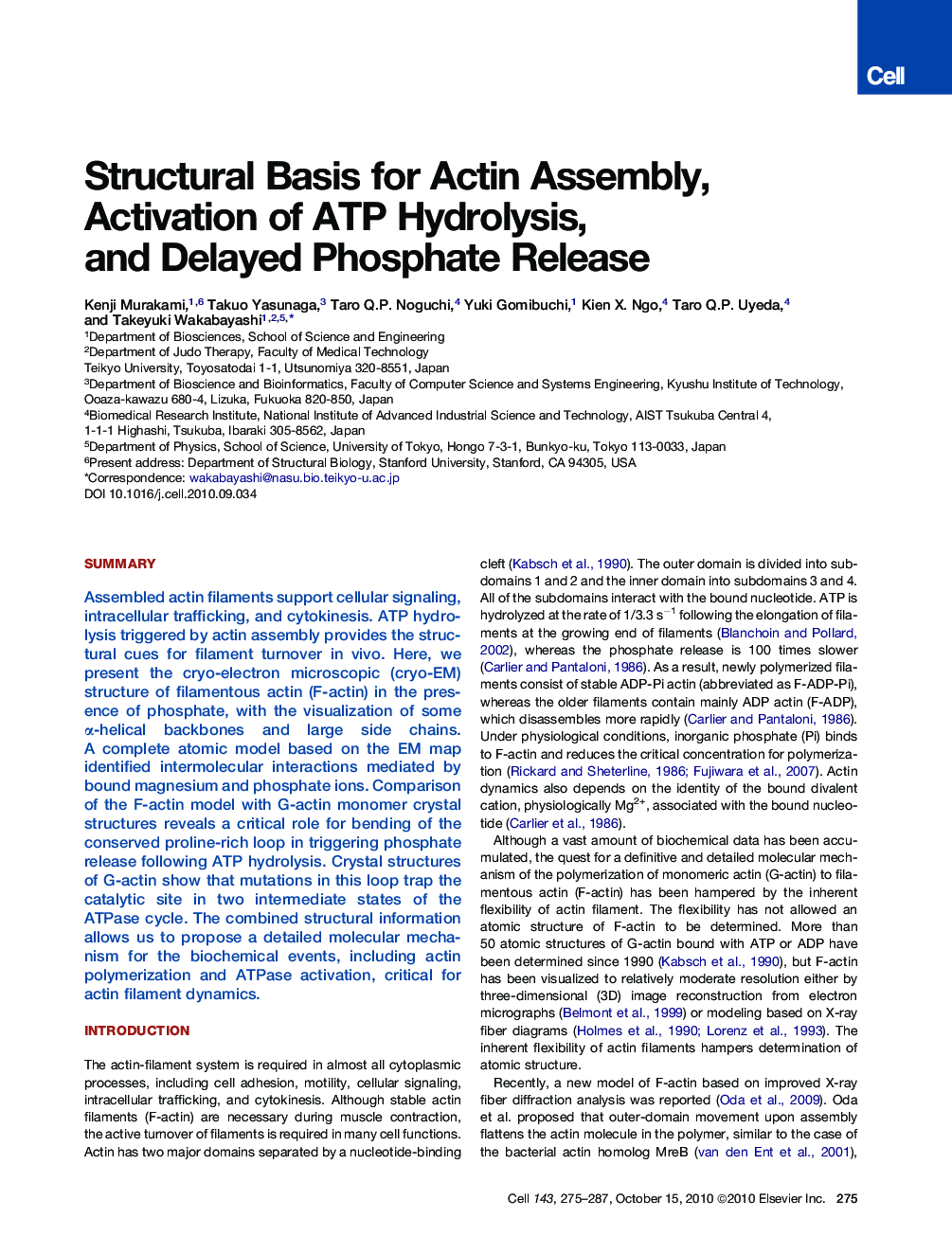| Article ID | Journal | Published Year | Pages | File Type |
|---|---|---|---|---|
| 2035975 | Cell | 2010 | 13 Pages |
SummaryAssembled actin filaments support cellular signaling, intracellular trafficking, and cytokinesis. ATP hydrolysis triggered by actin assembly provides the structural cues for filament turnover in vivo. Here, we present the cryo-electron microscopic (cryo-EM) structure of filamentous actin (F-actin) in the presence of phosphate, with the visualization of some α-helical backbones and large side chains. A complete atomic model based on the EM map identified intermolecular interactions mediated by bound magnesium and phosphate ions. Comparison of the F-actin model with G-actin monomer crystal structures reveals a critical role for bending of the conserved proline-rich loop in triggering phosphate release following ATP hydrolysis. Crystal structures of G-actin show that mutations in this loop trap the catalytic site in two intermediate states of the ATPase cycle. The combined structural information allows us to propose a detailed molecular mechanism for the biochemical events, including actin polymerization and ATPase activation, critical for actin filament dynamics.
Graphical AbstractFigure optionsDownload full-size imageDownload high-quality image (141 K)Download as PowerPoint slideHighlights► The cryo-EM structure of actin filament reveals intermolecular interactions ► Mg2+ and phosphate ions (Pi) play an important role in stabilizing the filament ► The bending of the Pro-rich loop triggers the activation of the ATPase activity ► A cavity in the catalytic site plays a role in releasing hydrolyzed γ-phosphates
